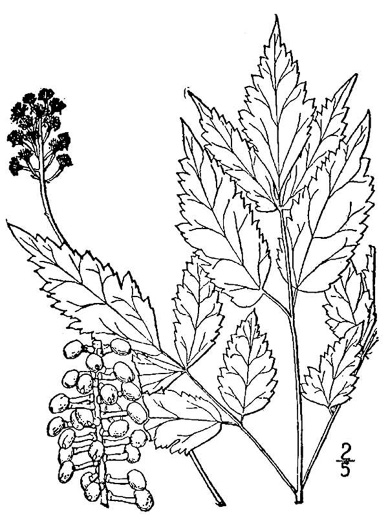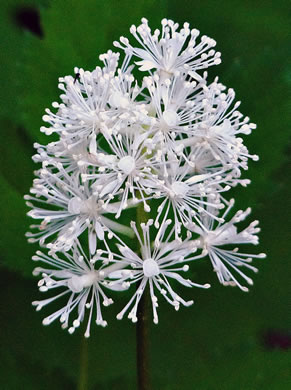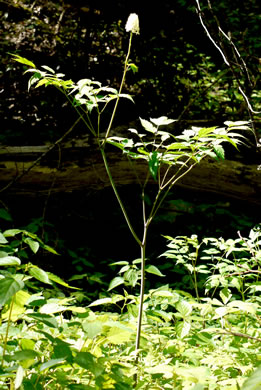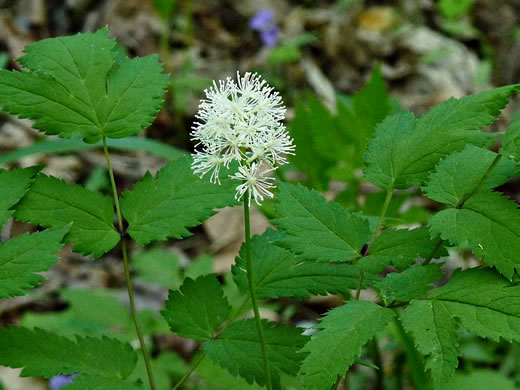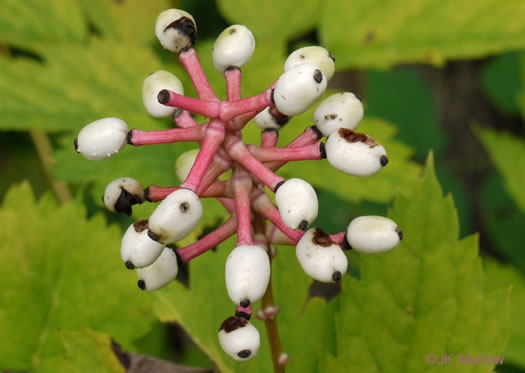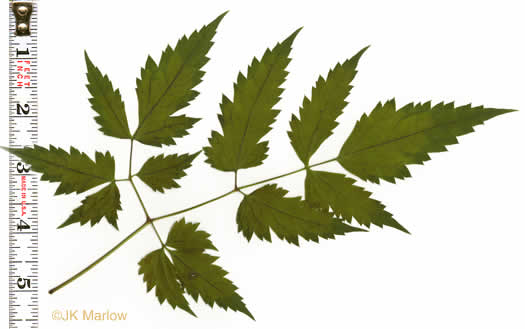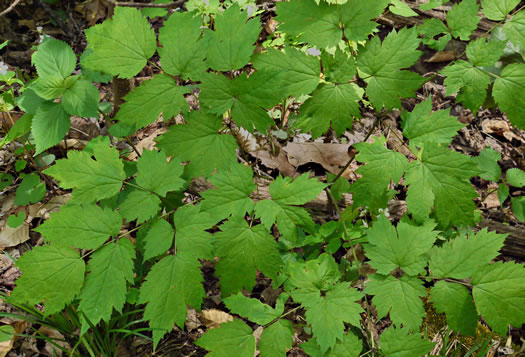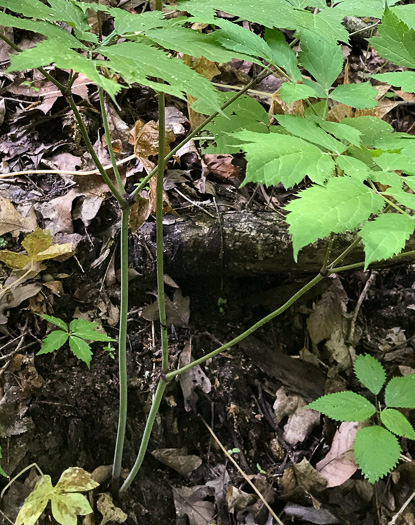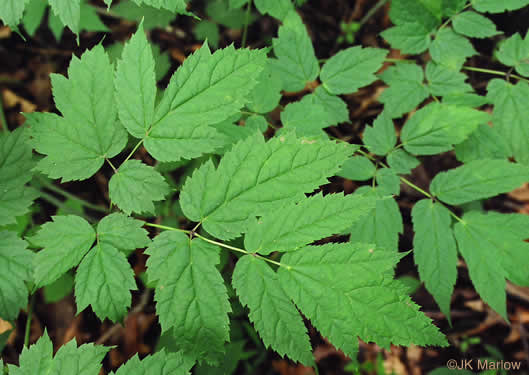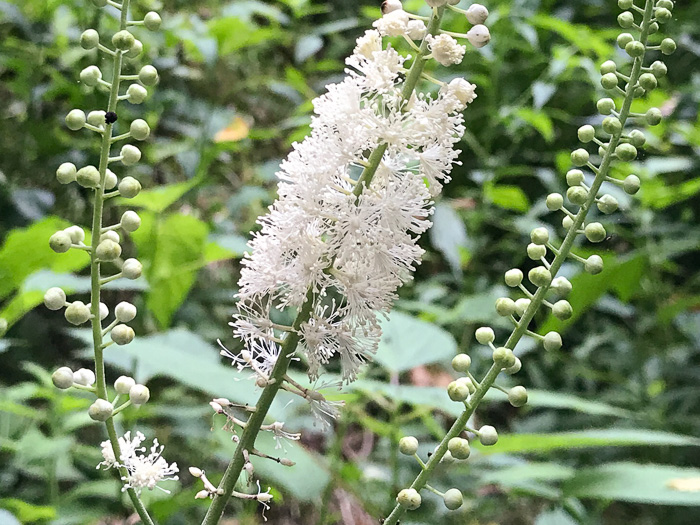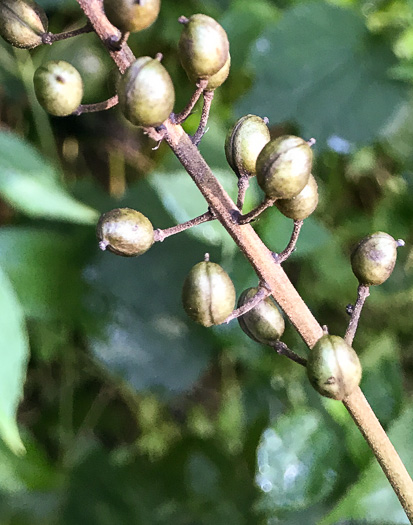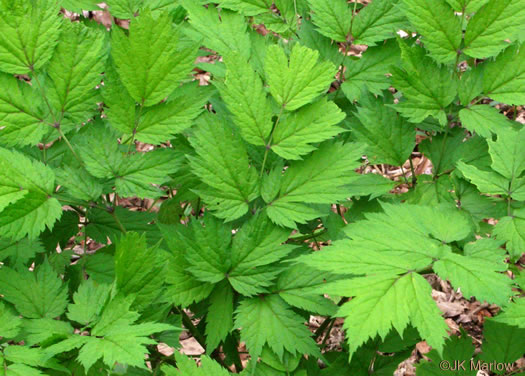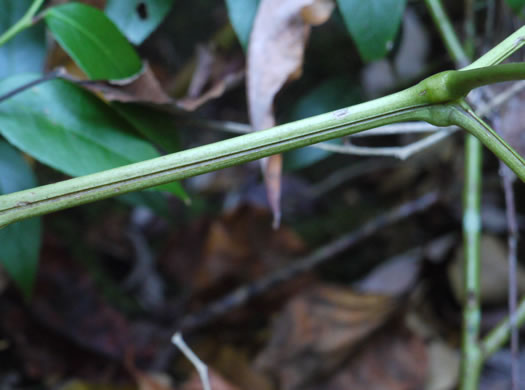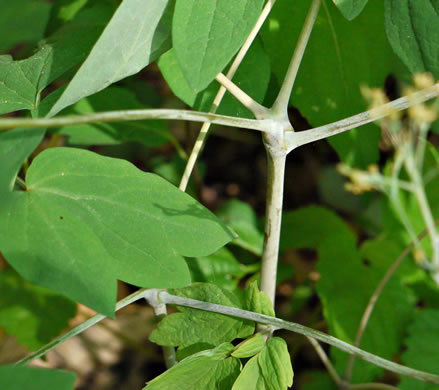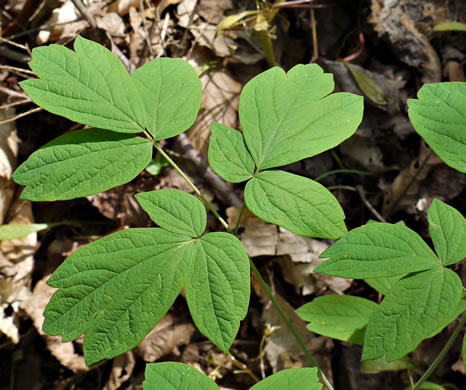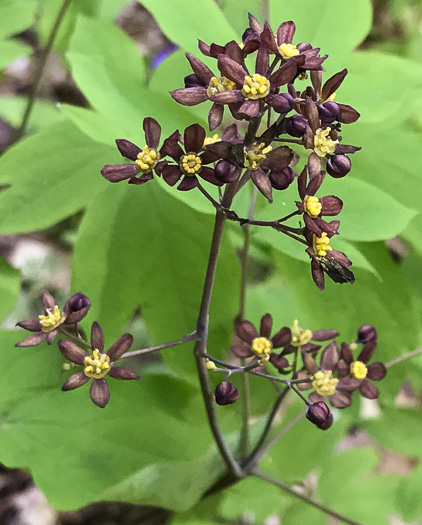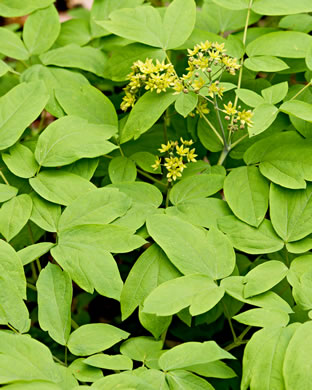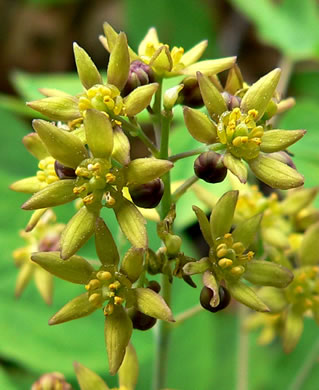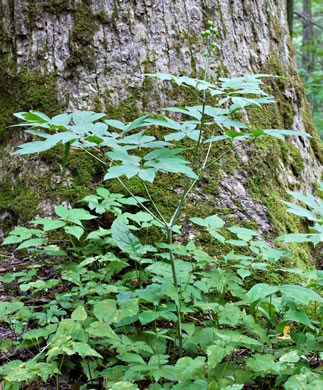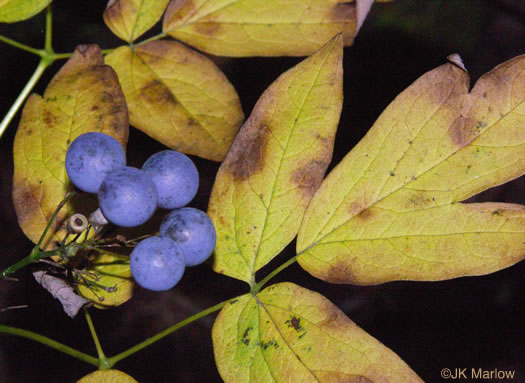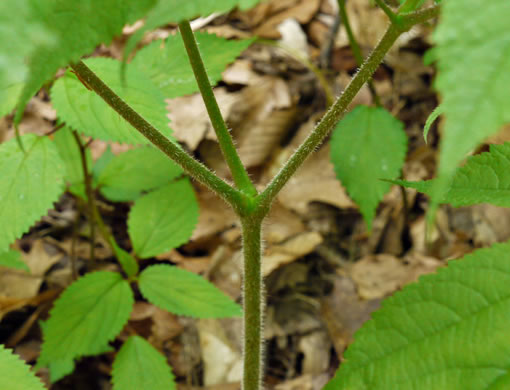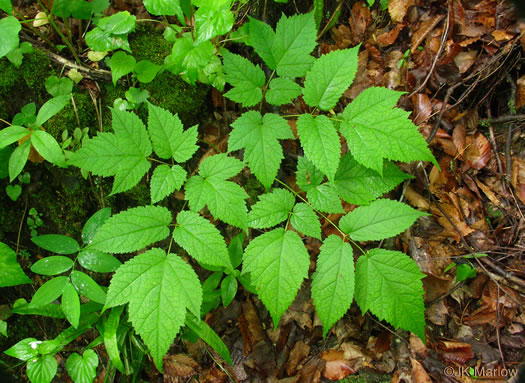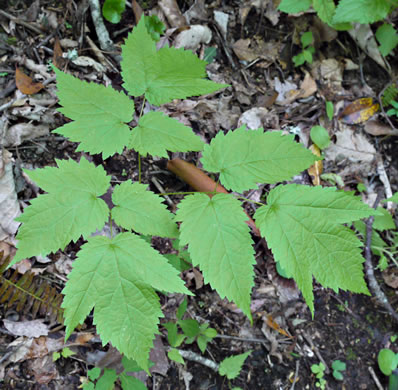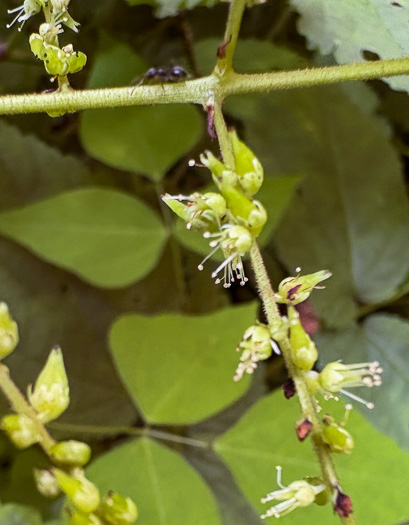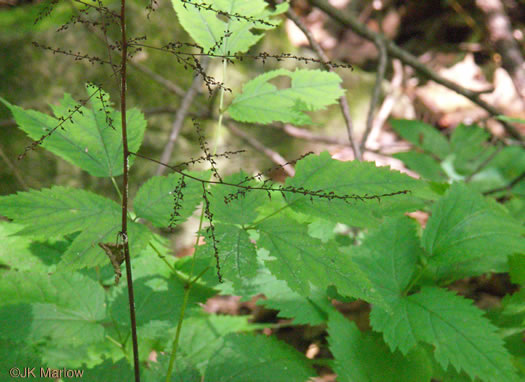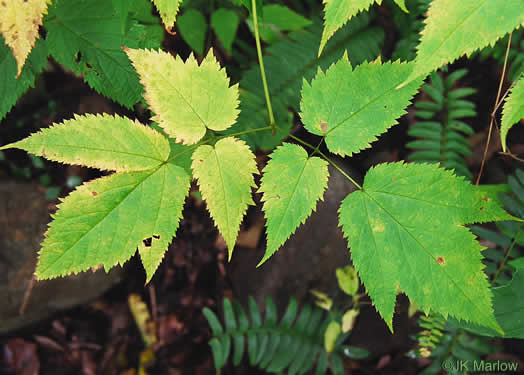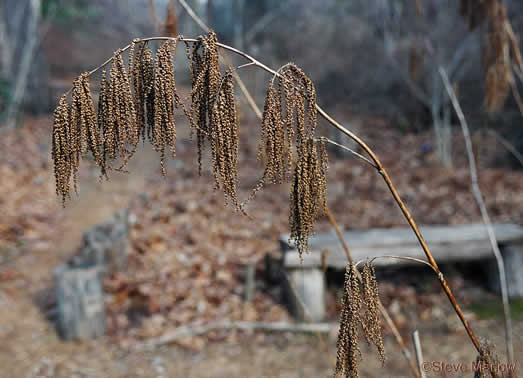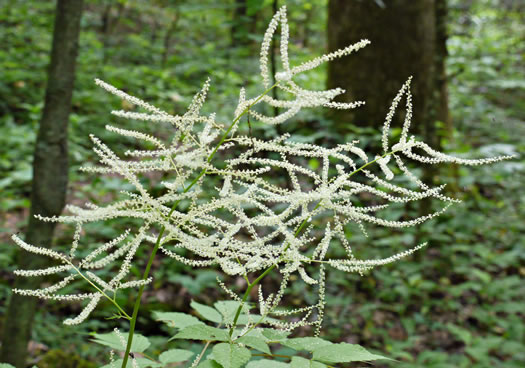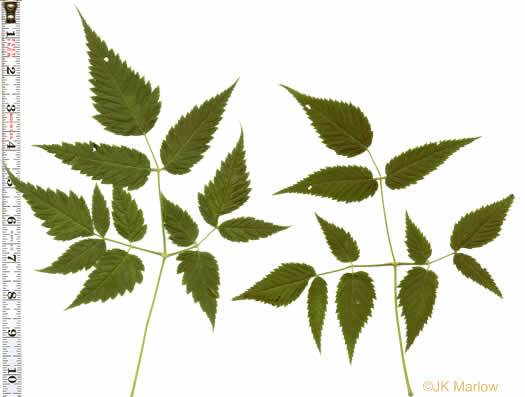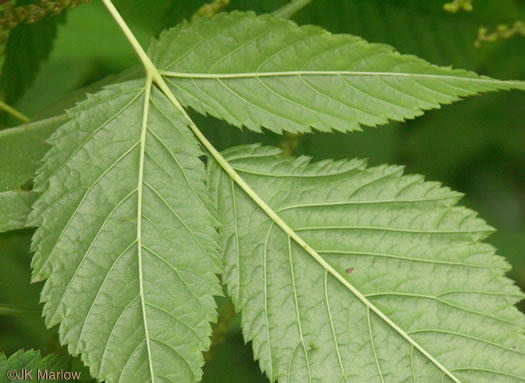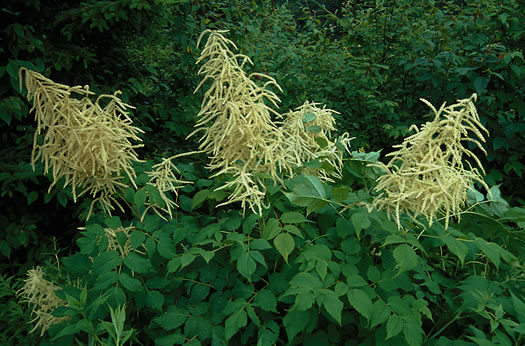Your search found 39 image(s) of Cohosh, Doll's-eyes, and Goatsbeard.
To see larger pictures, click or hover over the thumbnails.
To go to the plant's detail page, click its name.
 Habitat: Rich cove forests and slopes
Habitat: Rich cove forests and slopes
Sepals and petals drop early, stamens numerous, stigma wider than ovulary, per Wildflowers of the Eastern United States (Duncan & Duncan, 1999).
Perennial to 80cm tall with 2 large compound leaves, per Wildflowers of the Eastern United States (Duncan & Duncan, 1999).
Small white flowers borne in a compact raceme extending above the leaves, per Wildflowers of Tennessee (Carman, 2005).
White berries with purplish black "eye" on thick fleshy pink pedicels, per Wildflowers of the Southern Mountains (Smith, 1998).
 Habitat: Rich cove forests, other mesic and moderately to very fertile forests
Habitat: Rich cove forests, other mesic and moderately to very fertile forests
Terminal leaflet with 3 major veins arising from the base, per Weakley's Flora.
Leaflets broad, coarsely toothed; terminal leaflet generally 3-lobed, per Wildflowers of Tennessee, the Ohio Valley, and the Southern Appalachians (Horn, Cathcart, Hemmerly, & Duhl, 2005).
The petals are absent, but the flowers have numerous showy white stamens, per Wildflowers of Tennessee, the Ohio Valley, and the Southern Appalachians (Horn, Cathcart, Hemmerly, & Duhl, 2005).
Flower stalks 3-8' tall w tassel-like flowers in long narrow arching racemes, per Wildflowers & Plant Communities of the Southern Appalachian Mountains and Piedmont (Spira, 2011).
Follicles 5-8mm long, 4-5mm broad, broadly ellipsoid, pubescent, per Vascular Flora of the Carolinas (Radford, Ahles, & Bell, 1968).
Petiole of basal leaves terete, not grooved (or with an early shallow groove), per Weakley's Flora.
 Habitat: Rich cove forests and slopes, at moderate to high elevations
Habitat: Rich cove forests and slopes, at moderate to high elevations
Terminal leaflet with 3 major veins arising from the base, per Weakley's Flora.
Begins to bloom in late summer, about when A. racemosa should be about finished, per Vascular Plants of North Carolina.
Petiole of basal leaves with a deep, broad groove (ca. 1mm wide & deep), per Weakley's Flora.
Follicles 8-15mm long, 4-8mm broad, glabrous, compressed, per Vascular Flora of the Carolinas (Radford, Ahles, & Bell, 1968).
 Habitat: Rich forests
Habitat: Rich forests
All parts of the plant have a whitish cast, per Guide to the Wildflowers of SC, 1st ed. (Porcher & Rayner, 2001).
The oval leaflets are irregularly lobed above the middle, per Wildflowers of Tennessee, the Ohio Valley, and the Southern Appalachians (Horn, Cathcart, Hemmerly, & Duhl, 2005).
The six petal-like sepals are yellow-green to purple-green, per Wildflowers of Tennessee, the Ohio Valley, and the Southern Appalachians (Horn, Cathcart, Hemmerly, & Duhl, 2005).
True petals are the small yellowish glands at the base of petaloid sepals, per Wildflowers of the Southern Mountains (Smith, 1998).
1 large ternately decompound leaf above inflorescence, 1(2) smaller below, per Wildflowers of Tennessee (Carman, 2005).
Fruits are dark blue, poisonous, and berry-like, per Wildflowers of Tennessee, the Ohio Valley, and the Southern Appalachians (Horn, Cathcart, Hemmerly, & Duhl, 2005).
 Habitat: Cove forests, seepage slopes, boulderfield forests
Habitat: Cove forests, seepage slopes, boulderfield forests
Terminal leaflets are acuminate and usually 3-lobed with a cordate base, per Vascular Flora of the Carolinas (Radford, Ahles, & Bell, 1968).
Leaves 2x ternately divided; terminal leaflet 3-parted; leaflets long-tipped, sharply toothed, per Wildflowers of the Atlantic Southeast (Cotterman, Waitt, & Weakley, 2019).
Astilbe has a hairy upper stem, whereas Aruncus is smooth, per Wildflowers of the Southern Mountains (Smith, 1998).
Panicle branches glandular-puberulent. Flowers bracteate, short-pedicellate. Stamens 8-10, per Vascular Flora of the Carolinas (Radford, Ahles, & Bell, 1968).
Fruit erect, lanceolate follicles, 0.15-.2" long, borne on a large panicle, per Wildflowers of Tennessee, the Ohio Valley, and the Southern Appalachians (Horn, Cathcart, Hemmerly, & Duhl, 2005).
Lateral leaflets ovate, elliptic, 3-lobed or lobed on one side, per Vascular Flora of the Carolinas (Radford, Ahles, & Bell, 1968).
 Habitat: Moist, nutrient-rich forests and woodland borders
Habitat: Moist, nutrient-rich forests and woodland borders
Fruits are dry capsules consisting of 3 seed chambers per flower, per Wildflowers of Tennessee, the Ohio Valley, and the Southern Appalachians (Horn, Cathcart, Hemmerly, & Duhl, 2005).
Inflorescence a large panicle of racemes, per Vascular Flora of the Carolinas (Radford, Ahles, & Bell, 1968).
Leaflets resemble elm leaves; terminal leaflet is unlobed, per Wildflowers of Tennessee, the Ohio Valley, and the Southern Appalachians (Horn, Cathcart, Hemmerly, & Duhl, 2005).
Leaflets have double-toothed eges, per Wildflowers of Tennessee, the Ohio Valley, and the Southern Appalachians (Horn, Cathcart, Hemmerly, & Duhl, 2005).

